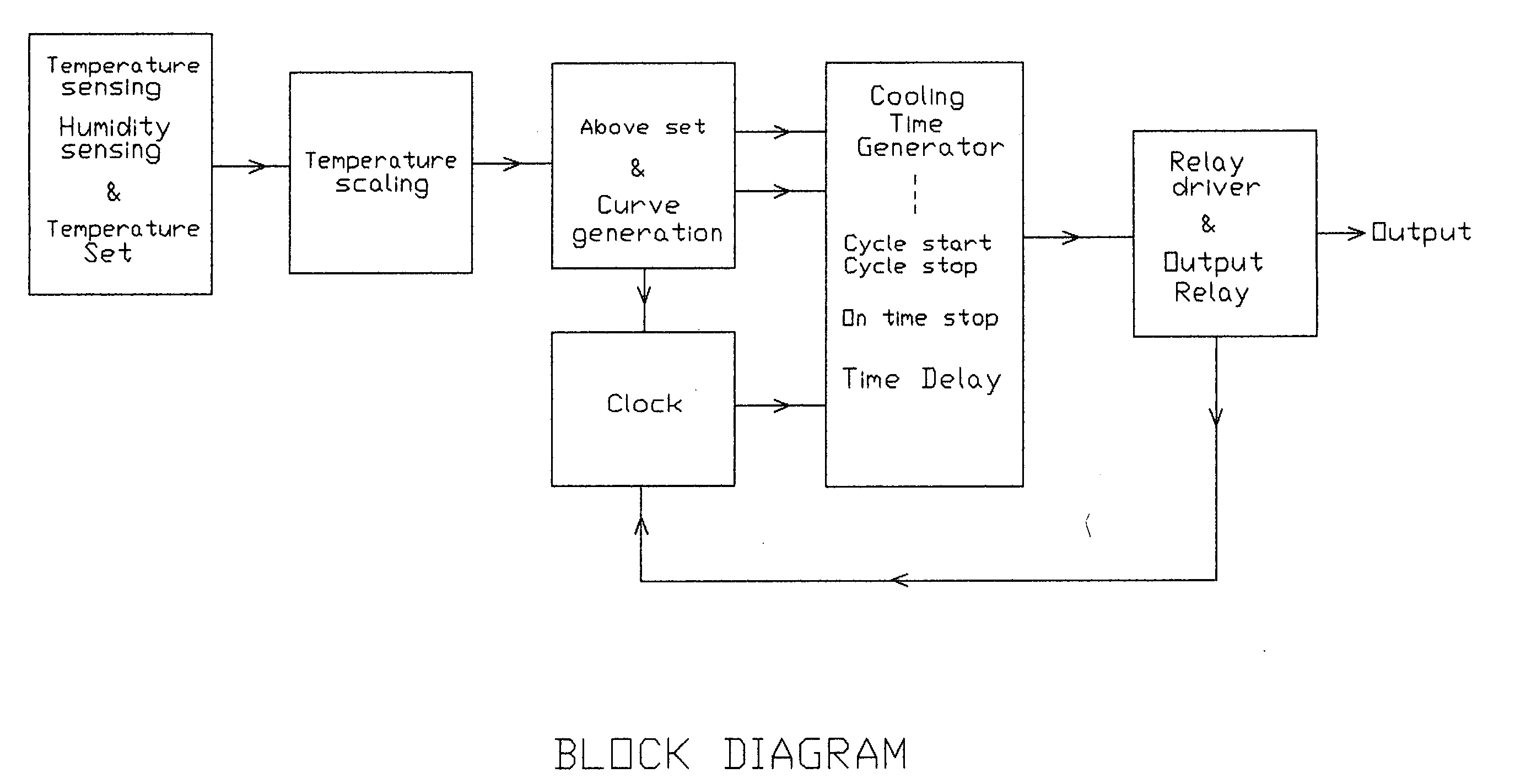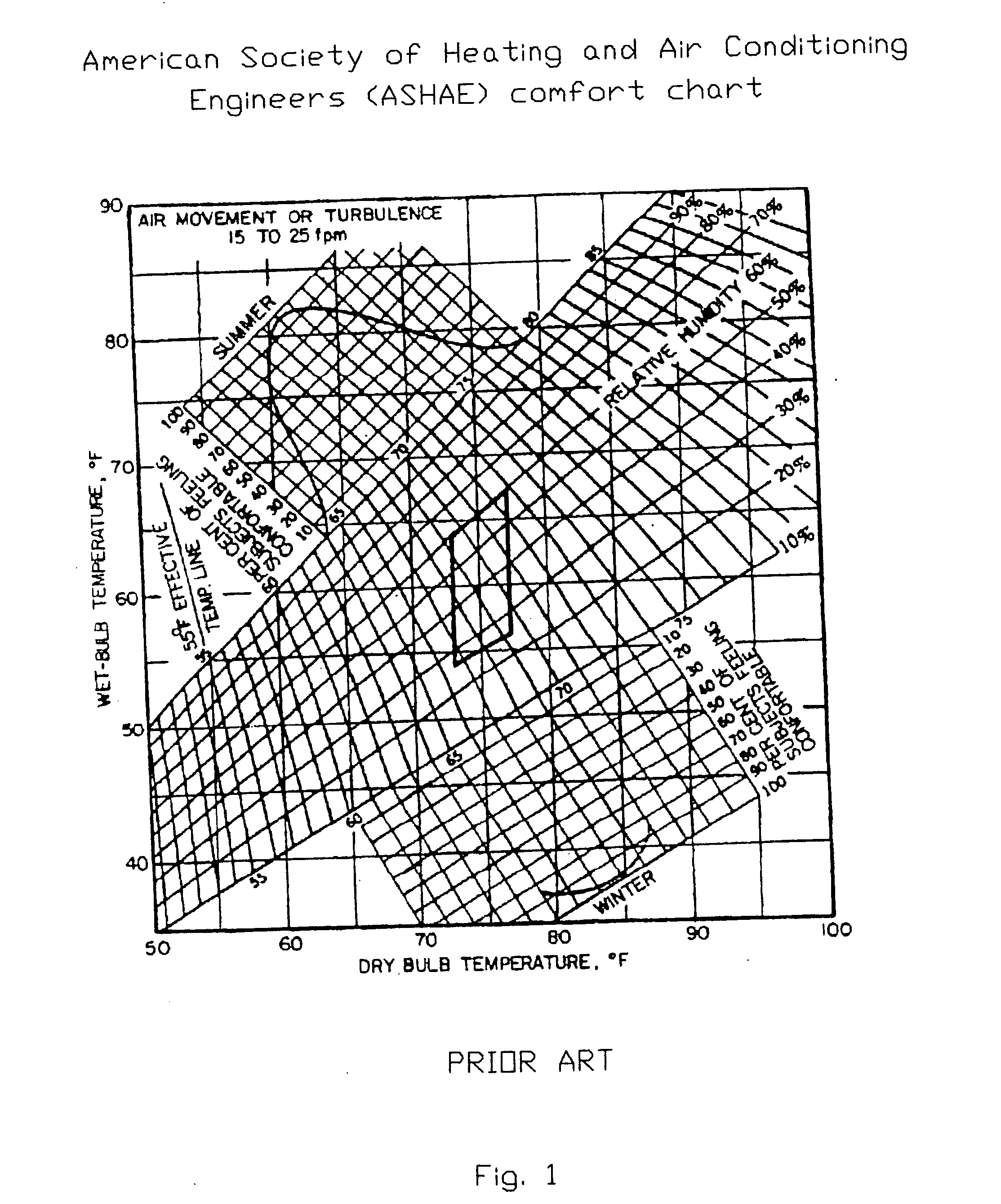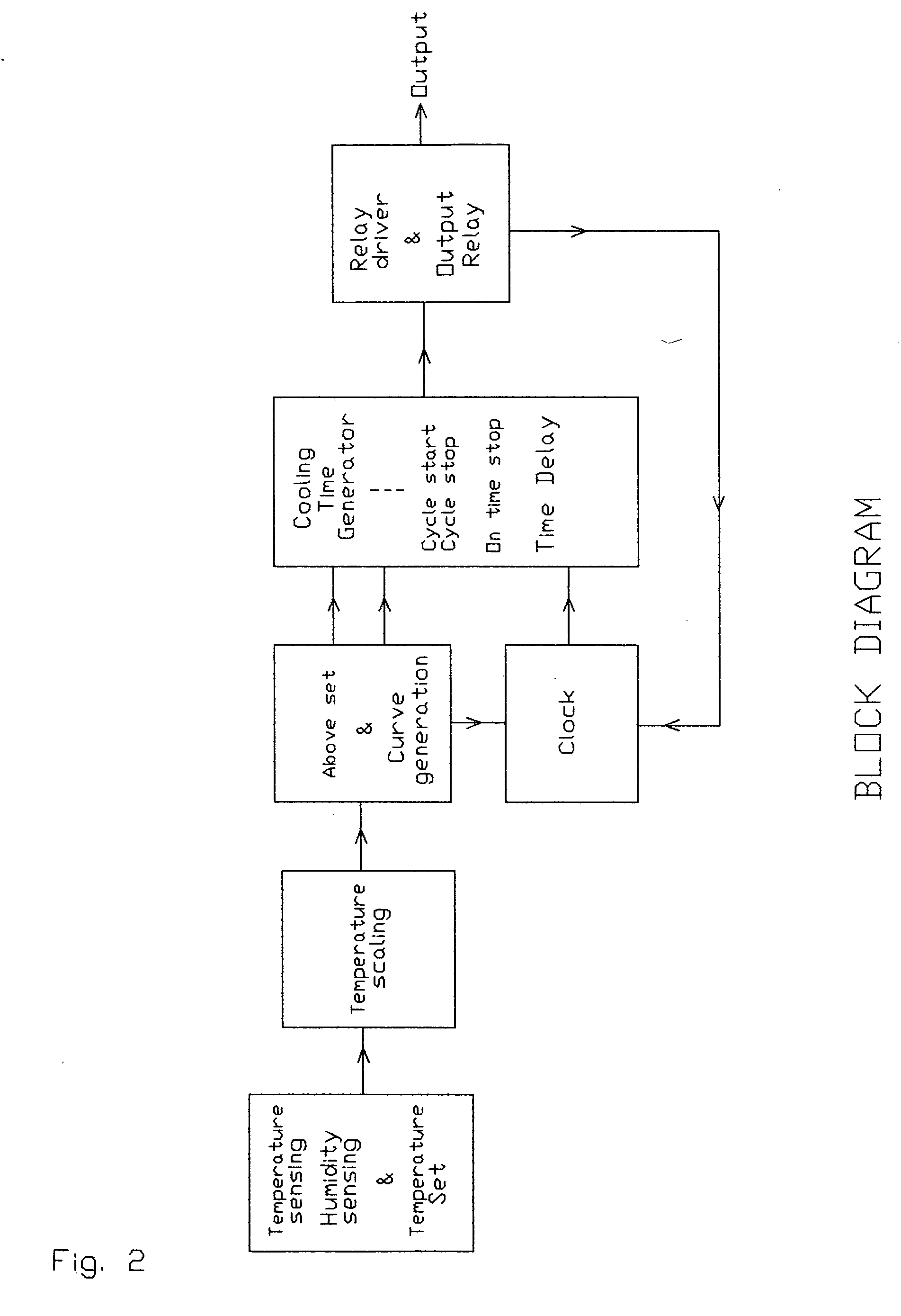Air-conditioning thermostat
- Summary
- Abstract
- Description
- Claims
- Application Information
AI Technical Summary
Benefits of technology
Problems solved by technology
Method used
Image
Examples
Embodiment Construction
FIGS. 1 THROUGH 10 PREFERRED EMBODIMENT
[0049]FIG. 1 ASHAE comfort chart shows the relationship of temperature and relative humidity, as it effects comfort summer and winter.
[0050]FIG. 2 shows a block diagram of my thermostat. The sensed temperature, humidity and temperature-set are combined to permit a user to select desired minimum effective temperature. The difference between indoor effective temperature and temperature-set is sent to temperature scaling, where the user selects an acceptable cooling response to temperature above temperature set. The scaled signal is sent to a curve generation block where the signal is split. One path is scaled linear or non-linear. And a second path determines if temperature is above or below temperature-set. These two signals are sent to the cooling time generator block and to the clock block. The clock block signal is also sent to the Cooling time generator block. In this block the signals are processed by the Cycle start, Cycle stop, On time s...
PUM
 Login to View More
Login to View More Abstract
Description
Claims
Application Information
 Login to View More
Login to View More - R&D
- Intellectual Property
- Life Sciences
- Materials
- Tech Scout
- Unparalleled Data Quality
- Higher Quality Content
- 60% Fewer Hallucinations
Browse by: Latest US Patents, China's latest patents, Technical Efficacy Thesaurus, Application Domain, Technology Topic, Popular Technical Reports.
© 2025 PatSnap. All rights reserved.Legal|Privacy policy|Modern Slavery Act Transparency Statement|Sitemap|About US| Contact US: help@patsnap.com



